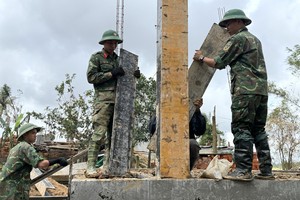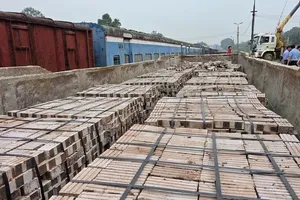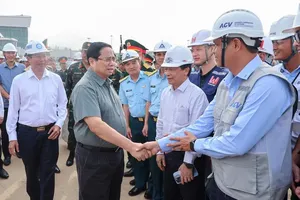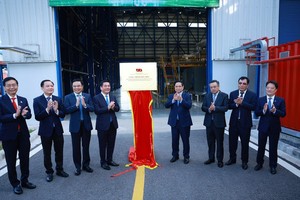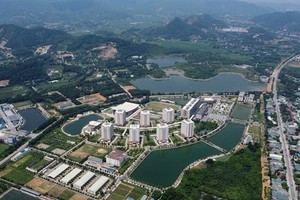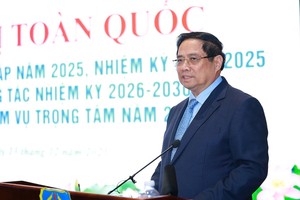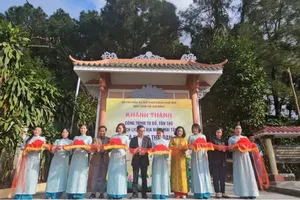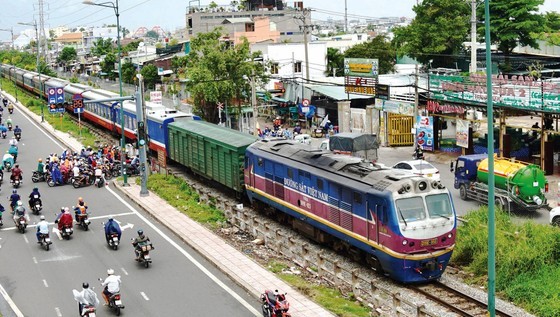 |
A train moves through Thu Duc City, Ho Chi Minh City. (Photo: SGGP) |
According to the leadership of the Vietnam Railways Corporation (VNR), while waiting for the investment in high-speed railways with a total capital of US$64.9 billion, the existing railway lines still need efficient exploitation.
Promising signals
Hanoi and Saigon railway companies have recently reported surprising profits of over a hundred billion VND in the first nine months of the year. Specifically, Saigon Railway Transport Joint Stock Company announced revenue of over VND1,358 billion and a profit of over VND80 billion, an increase of 210 percent compared to the same period in 2022. Similarly, Hanoi Railway Transport Joint Stock Company also reported revenue of over VND1,912 billion and a profit of over VND97 billion, up 177.9 percent respectively over the same period in 2022.
These figures represent significant efforts by railway transport companies. In the period from 2019 to 2021, the railway transport sector nearly hit bottom, with moments facing the risk of suspending train operations due to a situation of continuous losses. This critical situation led railway transport companies to be subject to special financial supervision. For example, Hanoi Railway Transport Joint Stock Company, with a charter capital of VND801 billion, had its owner's equity reduced to only VND421 billion; and Saigon Railway Transport Joint Stock Company, with a charter capital of VND503 billion, had its owner's equity reduced to only VND113 billion.
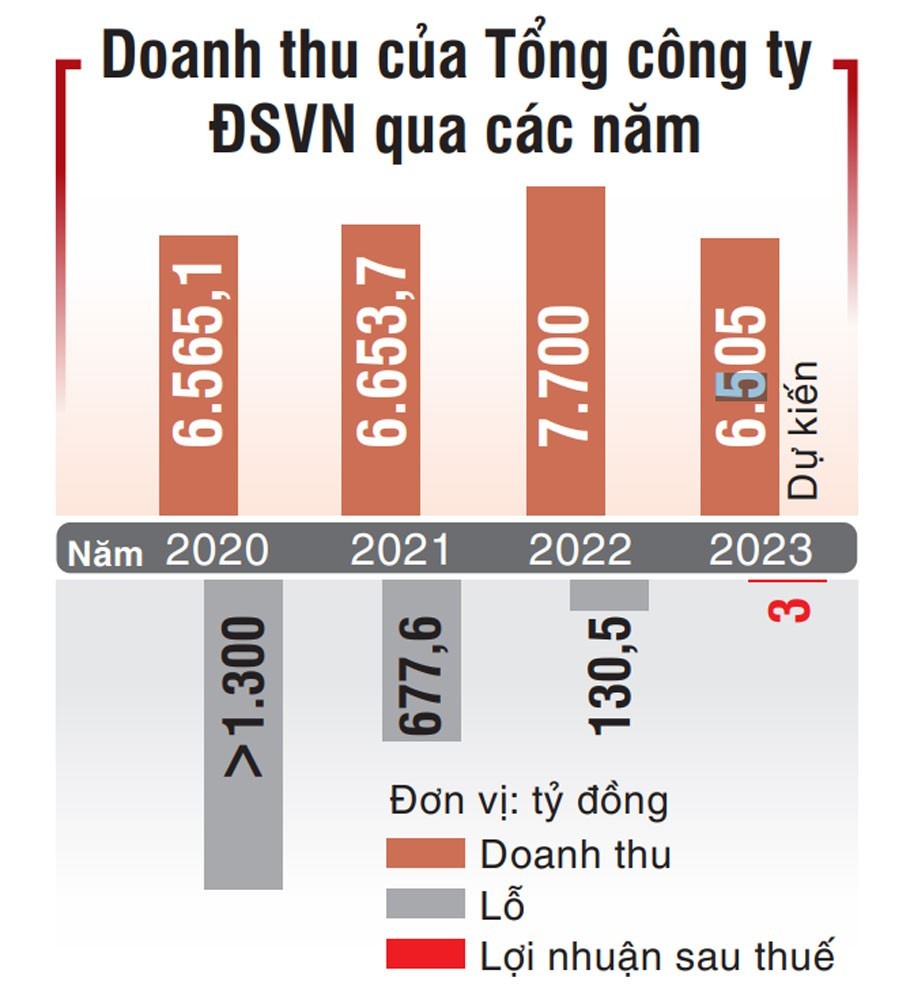 |
In that context, the railway industry has made great efforts to overcome challenges and improve its image. Along with the operation of 5-star tourist trains such as SE3/4 on the Hanoi - HCMC route, STN2 on the HCMC - Nha Trang route, and Victoria Express on the Hanoi - Sa Pa route. Recently, a pair of high-quality train brand on the Hanoi - Da Nang route SE19 and SE20 was introduced.
Mr. Hoang Gia Khanh, General Director of VNR, stated that the North-South railway was ranked first on the list of the world's most beautiful railway lines by travel guide book publisher Lonely Planet, which is an advantage that needs to be exploited. Therefore, transport units have focused on upgrading services to attract tourists on this route.
According to passenger feedback, the adoption of new technologies has improved passenger experience, such as scanning QR codes to access a sales website to buy specialties from 34 provinces and cities with railway lines. The railway industry has also surprised many passengers as major stations in Hanoi and some other large stations have introduced VIP waiting rooms with private exits to the station and train boarding.
Additionally, home pick-up and drop-off services continue to be deployed. Many passengers have also expressed surprise at the gradual reduction of littering and pollution along the railway lines, replaced by beautiful images of train tracks and flower roads, a new movement initiated by the railway industry, and many localities have responded since early 2023.
 |
Parallel trains on Kha Van Can Street, Thu Duc City, Ho Chi Minh City. (Photo: SGGP) |
Fundamental solutions required
Despite many positive signals, according to Deputy Minister of Transport Nguyen Danh Huy, the railway industry still cannot compete with other transportation methods such as road and aviation. While waiting for high-speed railway investment, the railway industry still needs to stand firm to maintain its position as the country's backbone transportation sector. The fundamental solution is to invest in upgrading infrastructure.
Currently, the project to renovate and upgrade the Nha Trang - Saigon railway (total investment of VND1.098 billion) is implementing two construction packages to replace sleepers, ballast, and rails in 8 sections, having completed nearly 80 percent of the volume. The remaining packages to upgrade Song Than and Di An stations are undergoing technical design.
The project to renovate and upgrade the Hanoi - Vinh railway (total investment of about VND811 billion) is implementing the construction package 1, including the renovation of the upper structure on the Hanoi - Thanh Hoa section, replacing rails, ballast, and rocks in the Thuong Tin - Cho Tia, Ninh Binh - Cau Yen, Dong Giao - Bim Son sections and constructing a bridge in Ha Nam... The project to renovate and upgrade the Vinh - Nha Trang railway (total investment of VND1.189 billion) is actively preparing for early commencement, ensuring completion by 2025.
According to Deputy Minister Nguyen Danh Huy, investing in infrastructure upgrades is the basis for the railway industry to improve service quality in both passenger and freight transport. While passenger transport has made significant marks recently, railway freight transport has also shown many positive signs. In the near future, businesses will continue to boost freight transport, strengthen container transport, initially transport seasonal agricultural products for export such as lychees, and actively participate in the logistics chain. Freight transport rates are also flexibly adjusted according to distance and time to attract customers.
In particular, the railway industry aims to bring border gates deep into the inland, creating favorable conditions for businesses and localities in cargo transportation. It is expected that the Vietnam railway system will have eight international intermodal terminals, including Dong Dang, Lao Cai, Yen Vien, Kep, Song Than, Kim Lien (Da Nang), Dieu Tri (Binh Dinh), Trang Bom (Dong Nai). Currently, the railway industry and Hai Duong province are also promoting to organize Cao Xa Station as an intermodal terminal. At these terminals, goods will be checked by customs force, customs procedures will be completed, containers will be sealed. It is only required to declare when reaching the border, saving 30 percent of time and 25 percent of costs compared to before.
According to the plan, from now until 2025, all operational international intermodal terminals will invest in upgrading items such as train loading and unloading tracks, customs clearance, and road connections to the cargo yard. The Transport Development and Strategy Institute reports that the average annual growth rate of international intermodal railway freight transport is six percent. The forecast for the volume of international intermodal railway transport by 2030 is about 4-5 million tons per year.
The Ministry of Transport states that according to the Vietnam railway network master plan for the period 2021-2030, with a vision to 2050, the railway industry will start a number of new railway lines to connect with international gateway seaports, airports, and railway hubs in major cities. Meanwhile, existing railway lines will continue to be upgraded and improved to be efficiently exploited, meeting the demand for both passenger and freight transport.
According to Mr. Hoang Gia Khanh, General Director of VNR in the 2021-2025 period, the railway industry will implement eight infrastructure projects with a total capital of about VND 9,580 billion, including two projects using official development assistance (ODA) capital and six projects using state budget capital.
In the first quarter of 2023 alone, two projects to renovate and upgrade the North-South railway using state budget funds in the mid-term public investment plan for the 2021-2025 period have been launched, including the renovation and upgrade of the Hanoi - Ho Chi Minh City railway section and the Nha Trang - Saigon railway section phase 2.











